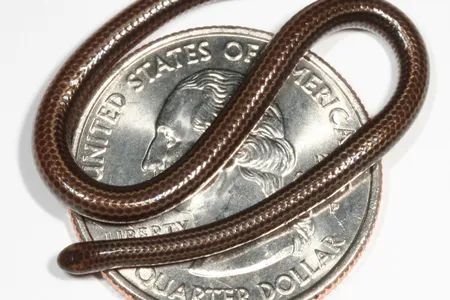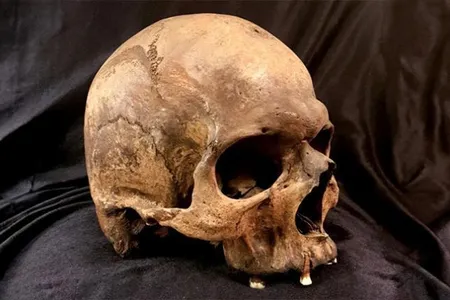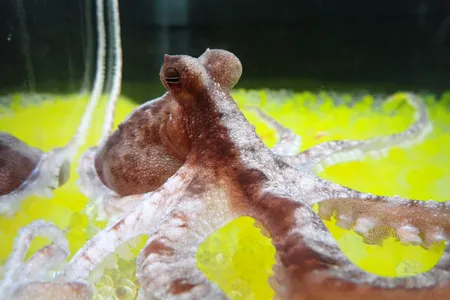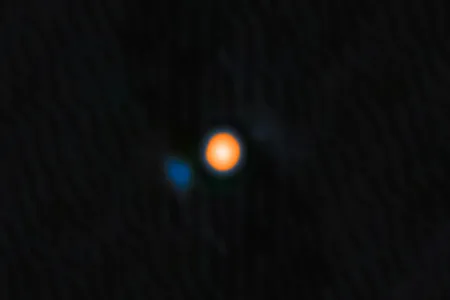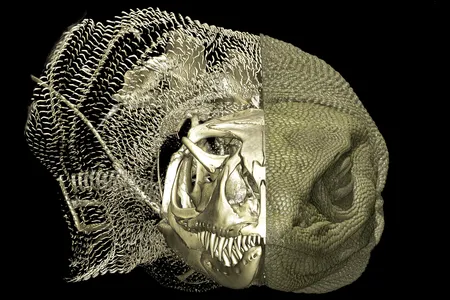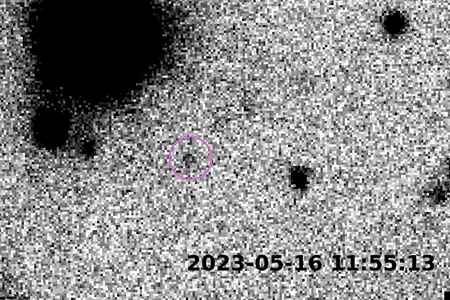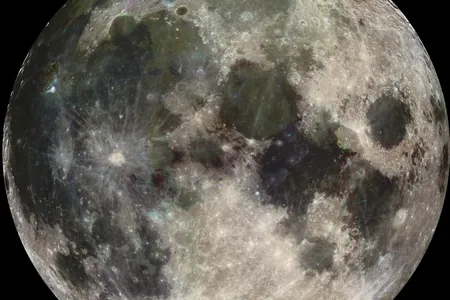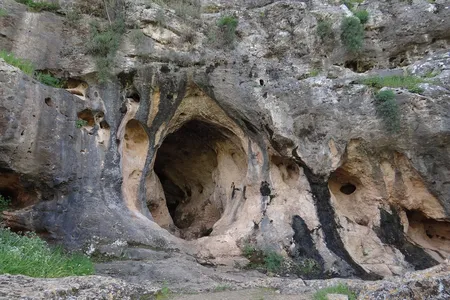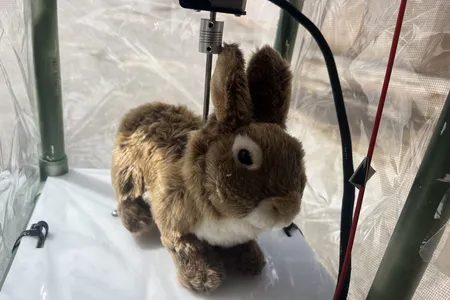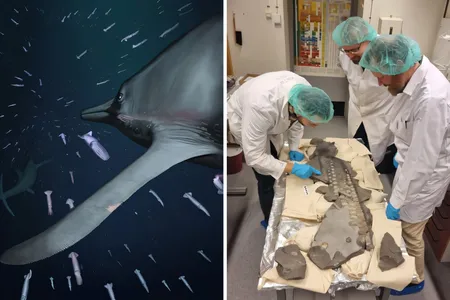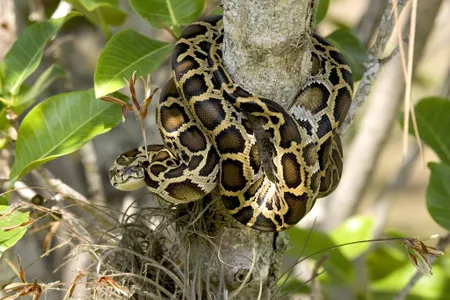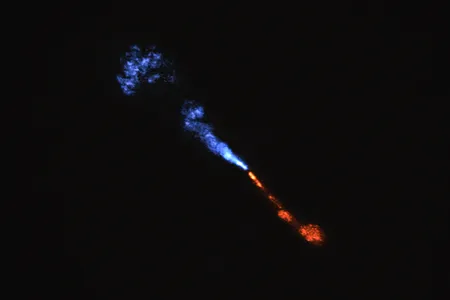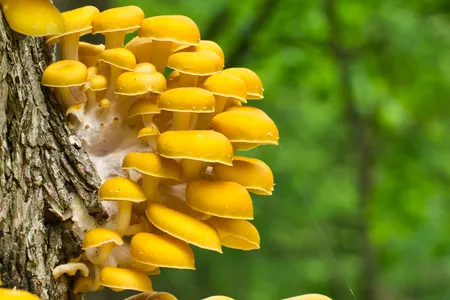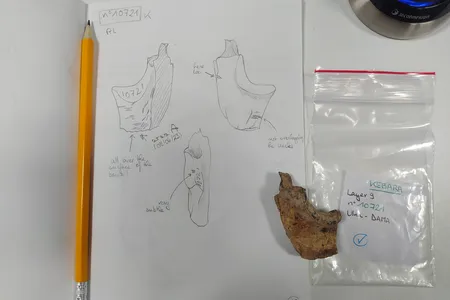Scientists Feared the World’s Smallest Snake Had Gone Extinct. They Just Found It Again
When fully grown, the Barbados threadsnake is only three to four inches long—shorter than many earthworms
Cancer DNA Can Be Detected in the Bloodstream Up to Three Years Before Diagnosis, Study Suggests
For a few individuals, scientists found genetic material from cancerous tumors in blood samples taken years before they were diagnosed through traditional methods
Optimists Really Are on the ‘Same Wavelength’ When They Think About the Future, New Study of Brain Activity Suggests
As the research participants thought about future scenarios, optimists displayed similar neural patterns, but pessimists showed more individualized brain activity
CCTV Footage Captures the First-Ever Video of an Earthquake Fault in Motion, Shining a Rare Light on Seismic Dynamics
A clip recorded in Myanmar in March reveals a curved path of the fault slip, which can help scientists better understand the physics of such events
With Ancient DNA, Scientists Have Mapped 37,000 Years of Disease Across Europe and Asia
Zoonoses—diseases that spread from animals to humans—began to gain prevalence some 6,500 years ago with the rise of animal husbandry, a new study suggests
Octopuses Fall for the Rubber Hand Illusion, Just Like Humans, Pointing to a Sense of Body Ownership
The trick that plays with awareness of one’s own limb appeared to fool all six of the cephalopods tested in a series of experiments
Scientists Will Melt the World’s ‘Oldest Ice’ to Reveal Its Secrets and Uncover a Climate Record of 1.5 Million Years
The ice cores could offer clues about a period known as the Mid-Pleistocene Transition that has long puzzled scientists
Astronomers Say They’ve Finally Spotted Betelgeuse’s Companion Star, Long Predicted to Exist but Never Seen
The discovery, if confirmed, could explain Betelgeuse’s mysterious six-year oscillations in brightness
Athens Is Reviving a 2,000-Year-Old Roman Aqueduct to Deliver Water to the City Amid Prolonged Droughts
With the capital’s reservoirs approaching historic lows, officials are turning to ancient engineering to conserve potable water
These Odd Bony Structures Were Hiding Beneath the Skin of Far More Lizards Than Thought, Researchers Find
Called osteoderms, the chain mail-like plates may have helped some species adapt to Australia’s harsh environment
Astronomers Discover ‘Ammonite,’ a Mysterious Distant Object That Could Shed Light on Our Solar System’s History
The celestial body’s unusual orbit “implies that something extraordinary occurred” in the early days of the solar system—and throws a wrench in the Planet Nine idea
Today Will Likely Be Shorter Than Usual, and It Will Happen Again in August. Here’s Why
Because of the moon’s position, Earth is rotating just over a millisecond faster than usual on a few days this summer
A Child’s Skull That Has Long Confounded Archaeologists Might Be a Human-Neanderthal Hybrid, Study Suggests
According to new CT scans and models, parts of the 140,000-year-old skull resemble those of modern humans, while the jaw appears to be more similar to those of our extinct relatives
‘Robo-Bunnies’ Are the Newest Weapon in the Fight Against Invasive Burmese Pythons in Florida
Scientists are experimenting with robotic rabbits in hopes of luring the destructive snakes out of hiding so they can be euthanized
How Do Dogs Watch TV? That Might Depend on Their Personalities, New Research Suggests
A survey-based study reveals how different dogs react to elements on TV, suggesting that personalized television enrichment could support animal welfare in shelters or at home
Fossil Flipper Reveals Ichthyosaurs Hunted in Lethal Silence With Unique Adaptations for Stealth
An analysis of a roughly 180-million-year-old fossil fin reveals serrations and flexibility that might have served to dampen sound as the predator swam
Researchers Discover the Trick That Allows Burmese Pythons to Digest the Bones of Their Prey
Special intestinal cells collect excess minerals into particles the snakes can poop out, according to a new study
For the First Time, Astronomers Capture ‘Smoking Gun’ of Early Solar System Formation
Telescopes detected the first stages of hot minerals condensing from gas around a young star called HOPS-315
Invasive Golden Oyster Mushrooms Are Crowding Out Native Fungi and Could Slash Biodiversity in Forests, Study Suggests
Researchers found that trees in Wisconsin that had become hosts to the eye-catching species hosted only half the fungal biodiversity of trees that had not been invaded
Cut Marks on Animal Bones Suggest Neanderthal Groups Had Their Own Unique Culinary Traditions
Neanderthals in two nearby caves used different techniques when butchering animal carcasses in what is now Israel, according to a new paper
Page 1 of 500
